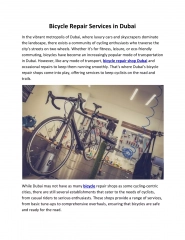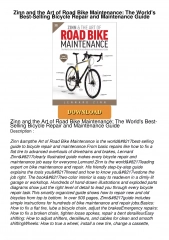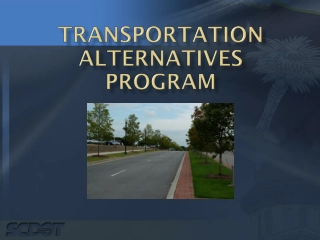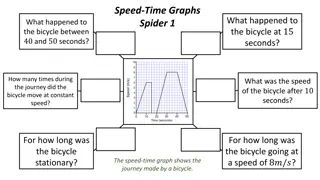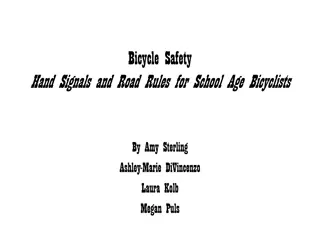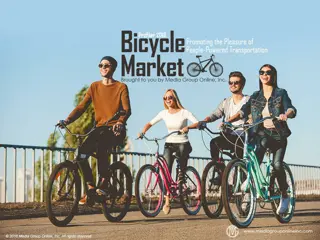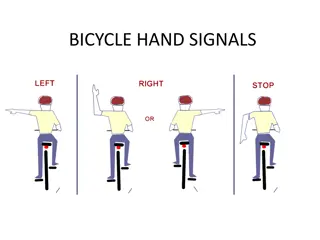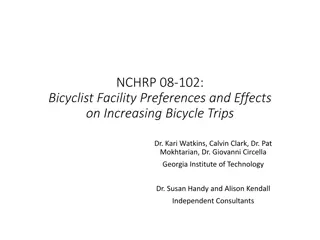
Insights into the US Cycling Industry: Sales, Trends, and Enthusiasts
Explore a comprehensive overview of the US cycling industry in 2021, detailing sales figures, market insights, and participation trends. Discover the impact of e-bike sales, inventory challenges, and the demographics of cycling enthusiasts. Insights reveal the resilience of bicycle dealers and the popularity of cycling as an outdoor activity across various demographic segments.
Uploaded on | 0 Views
Download Presentation

Please find below an Image/Link to download the presentation.
The content on the website is provided AS IS for your information and personal use only. It may not be sold, licensed, or shared on other websites without obtaining consent from the author. If you encounter any issues during the download, it is possible that the publisher has removed the file from their server.
You are allowed to download the files provided on this website for personal or commercial use, subject to the condition that they are used lawfully. All files are the property of their respective owners.
The content on the website is provided AS IS for your information and personal use only. It may not be sold, licensed, or shared on other websites without obtaining consent from the author.
E N D
Presentation Transcript
Pedaling Forward Despite Challenges The NPD Group reports total 2021 sales for the US cycling industry were $8.3 billion, a 4% YOY decrease; however, US Bureau of Economic Analysis (BEA) data shows an increase of 21.4% to $9.04 billion in its category, bicycles and accessories. The two sources almost agree when comparing 2021 s total sales to 2019 s. The NPD Group states the increase was 45% while the BEA shows a 43.3% 2YOY increase. Accessories may be the difference between the two sources, especially for 2021 compared to 2020. The cycling industry has also been impacted by the same supply chain and inventory issues of many other industries, especially since many bicycles are imported. The industry must also prepare for an inventory surge as supply increases more than future demand.
More Market Insights Electric (e-bike) bicycle sales increased 39% YOY during 2021, while sales for road bikes and the larger product sectors, mountain bikes and children s bikes, decreased. The lack of inventory of these other products was a primary factor driving the purchase of e-bikes. Surprisingly, bicycle dealers did not suffer from significant permanent closures as many as other retailers. The latest dealer count (March 2022) from Georger Data Services revealed the 6,857 US dealers were only 219 fewer than March 2021 and 56 fewer than March 2020. As with many products manufactured globally, the bicycle market s supply-chain/inventory challenges are a result of most bikes purchased in the US being imported. During 2021, $1.96 billion (custom value) of bikes were imported, a 40% increase from 2020.
Enthusiastic Participation Although the data in the latest (2021) Outdoor Participation Trends Report from the Outdoor Foundation is from 2020, it reveals how much cycling became (and remains) a popular outdoor activity as a respite from pandemic lockdowns. Road biking/mountain biking/BMX was the fourth most popular outdoor activity for 17.3% of Americans aged 6 and older, or 52.7 million participants. It was first among youth (6 17) and third among young adults (18 24). Of particular importance to dealers marketing strategies, road biking/mountain biking/BMX was second among African Americans at 12% and Latinx Americans at 17%, third among Asian Americans at 16% and fourth among Caucasian Americans at 17%.
The Biking/Cycling Crowd In-depth information from five of The Media Audit s 2021 consumer/market surveys helps to identify who are cycling enthusiasts. Women 18+ who were active cyclists during the past 4 weeks are slightly younger than men, or 42 and 45, respectively, on average. Income data shows women had a significantly larger average household income than men, or $83,620 and $76,560, respectively. Biking/Cycling is definitely an activity for the affluent as those with household incomes of $100,000 or more over-indexed the most. The Media Audit data strongly suggests biking/cycling is a family activity. Adults 18+ with children at home of any age indexed at 117 on average in these five markets while those with children younger than 6 indexed at 116 and those with children 6 or older at 108.
More Cycling Enthusiasts Insights With more people in a hybrid-work situation, they are more likely to have the latitude to participate in outdoor activities during the day and The Media Audit data for the same five consumer/market surveys on page 2 supports this trend. Averaging the indices in these five markets reveals adults 18+ who work from home 3 4 days/week over- indexed the most at 184 and those working 1 2 days/week from home over-indexed an average of 166. On average, adults 18+ who were biking/cycling during the past four weeks were most heavily exposed to podcast listening at 150, followed by newspaper at 139, radio at 135 and outdoor at 132.
The First Outlook for the Spring 2022 Season As many bike dealers continue to experience supply- chain issues, price increases and softening consumer demand, multiple bicycle industry sources surveyed 2,000 dealers in warmer states about their January/February 2022 sales compared to the previous year. Demand decreased significantly more than it increased, with 29% of surveyed dealers saying demand had decreased much and 32% decreased a little, compared to 12% saying demand increased much and 20% increased a little. Of the various product sectors, demand for e-bikes increased a little at 40% of the dealers while 39% said total demand for children s bikes decreased 39% and 51% for road bikes. The demand for city/commute bikes and mountain bikes was relatively unchanged.
Advertising Strategies Because of the average age and larger household income of most cycling enthusiasts, dealers can achieve maximum engagement with a media mix, including a reach medium, such as TV and radio, and direct mail, an ad on newspapers Websites, OOH or podcasts. The Media Audit data in the Profiler shows cycling is often a family activity. Dealers can use this trend to promote a family package of bikes during a spring or summer Family Weekend of Biking promotion. Industry trends strongly suggest Baby Boomers have chosen cycling as a health & fitness and social activity. TV will reach this audience effectively, but dealers will benefit even more from cross-promoting in newspaper and direct mail.
New Media Strategies With supply-chain and inventory challenges, bicycle dealers can use social media to be transparent about in-store inventory and delivery estimates. That kind of business honesty is important to younger consumers in particular. Cycling has attracted many new participants. Use social media to ask those new riders to describe their first lengthy ride and any visuals (photos and videos) they may have. This will attract comments and help new riders be a part of the local cycling community. As more people choose an electric bike as alternative transportation, their stories are just the kind of social media content that attracts attention. Ask them to share their experiences, especially as commuters, and what they ve learned about the value of e-bikes.

